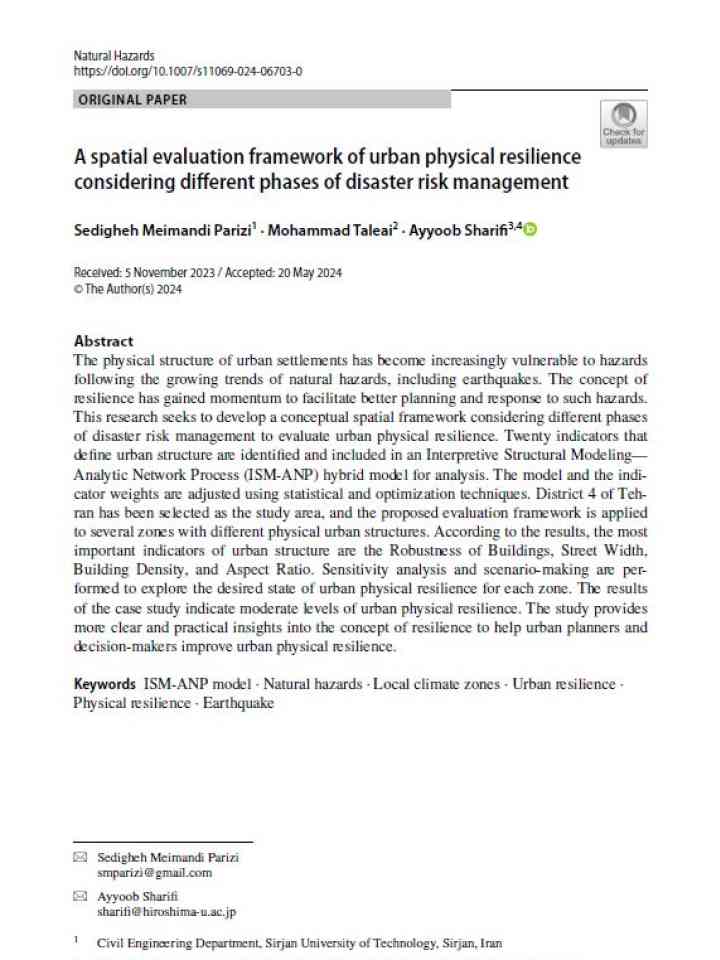A spatial evaluation framework of urban physical resilience considering different phases of disaster risk management
This research seeks to develop a conceptual spatial framework considering different phases of disaster risk management to evaluate urban physical resilience. Twenty indicators that define urban structure are identified and included in an Interpretive Structural Modeling—Analytic Network Process (ISM-ANP) hybrid model for analysis. The model and the indicator weights are adjusted using statistical and optimization techniques.
District 4 of Tehran has been selected as the study area, and the proposed evaluation framework is applied to several zones with different physical urban structures. According to the results, the most important indicators of urban structure are the Robustness of Buildings, Street Width, Building Density, and Aspect Ratio. Sensitivity analysis and scenario-making are performed to explore the desired state of urban physical resilience for each zone. The results of the case study indicate moderate levels of urban physical resilience. The study provides more clear and practical insights into the concept of resilience to help urban planners and decision-makers improve urban physical resilience.
Explore further
